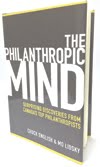I read an article last week that promoted the use of content marketing in automobile sales. It started by detailing the way the Internet has changed the relationship between salesperson and customer. Salespeople used to have exclusive access to product and industry knowledge. With it came credibility. They were the experts. Now that consumers can use online resources to know just as much as the salesperson, the power balance in the relationship has shifted.
So, how does the salesperson re-gain control? The article suggested that the solution was for salespeople to use various content marketing techniques. A post on the Dealer Communications site makes the point that product information is ubiquitous online and that consumers are actually looking for perspectives to help them parse all the data. That in turn provides opportunities for salespeople to provide consumers with unique insights using blogs, videos and other online content.
As I was reading this, I kept thinking about a famous quote from the hugely successful insurance salesman Ben Feldman. “Sales is 98% people knowledge and 2% product knowledge.” I began my working life as a headhunter, which is the most challenging sales environment you can imagine. My experience then and throughout my career has proven the wisdom of Feldman's words.
It seems to me that content marketing addresses the product knowledge portion of the quote. But that’s only 2% of the sale. What about the other 98%? Sooner or later, the sale must be consummated in a personal meeting. What happens then?
The same Dealer Communications post makes the following assertion. “When customers consume your self-published content prior to sale they have a stronger connection with you.” Really?? This assumes that sales connections are built on the knowledge or perspectives of the salesperson as opposed to the salesperson’s knowledge of the customer.
In his Sales Lion blog, Marcus Sheridan talks about using content marketing to boost the sales of a company that installs inground pools. The company changed its sales approach from a traditional model to one where a request for a quote is met with an invitation to review the company’s vast online resources (blogs, videos, e-books). I found the next two steps in their sales process astounding:
Once a potential customer educates themselves through our content, they tell us the pool and options they want, at which point we send them via email an actual quote.
If the customer reviews the quote and agrees to its terms, we then go out to their home to confirm there are no hidden costs and write up the contract.
It would appear that we’ve gone one step further and virtually eliminated the salesperson. The first personal contact with the company is to confirm the details of the order. According to e-how.com the average cost of an inground pool is $20-30,000. I’m not sure about you, but there’s no way I would make a $20,000 buying decision without seeing someone. And even if I was prepared to do the preliminary work online, my interaction with the company rep would have huge impact on my decision. Content marketing may deliver the salesperson to my doorstep but it’s her sales ability that’s going to close the deal.
Even companies like Zappos that do all their business online have staked their success on the quality of the personal interaction with the customer. Tony Hsieh’s mantra of Delivering Happiness cannot be rendered by content alone and the training and selection of their customer service reps is now legendary.
In talking about great salespeople, Enterprise Rent-A-Car CEO Andy Taylor says, “the people who are the most successful are the ones who listen most closely to the customer.” Continuing, he adds, “We follow the two ears, one mouth rule here.” Sales success is built on asking tons of questions and listening carefully to the answers. Moreover, sales is always a transfer of emotion. The only way to close a sale is to deliver what the customer has told you she wants in an way that makes her feel good about her decision. Content marketing can’t do that.
There’s no question that content marketing is valuable to the sales cycle. It can definitely generate leads and it can even help to qualify prospects. But capitalizing on that value and making the sale is going to take that 98% of people knowledge. The bottom line is that to improve sales results your human resources are still more important than online resources.
What do you think?








